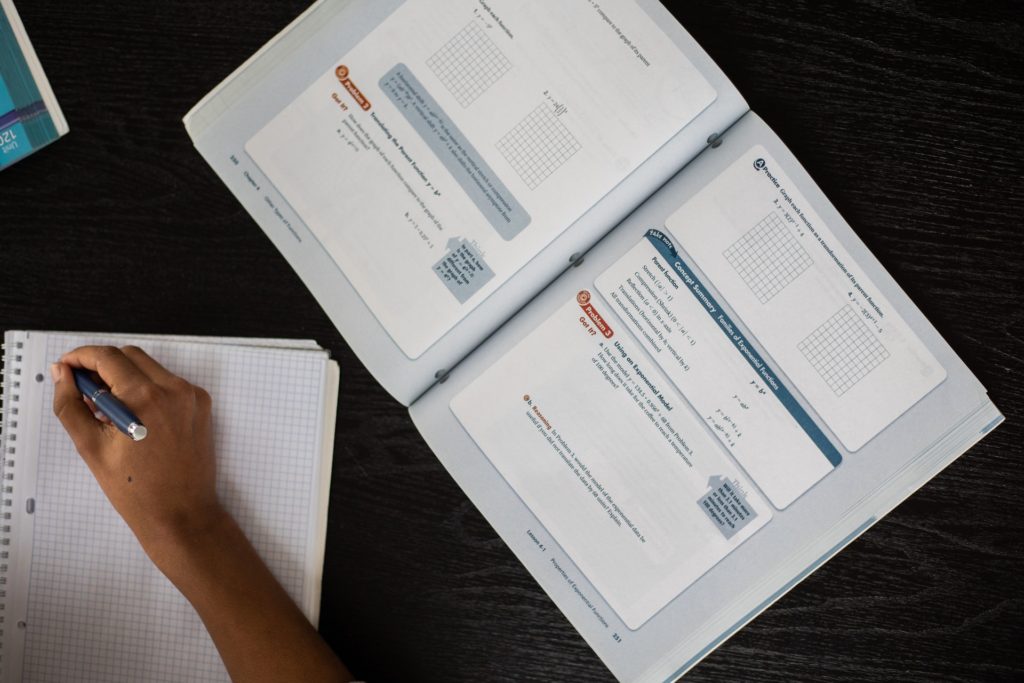Table of Contents
This guide on how to teach grammar to English language students will cover best practices in a way that new teachers can prepare themselves for their first class, however this guide may also prove useful to veteran teachers as it offers a modernized approach based on the principles of neuroscience research honed over the past decades.
Many classrooms look very similar to their counterparts from 50 years ago despite the advances in understanding of how the brain learns as well as the massively increased number of technologies and course materials available online. So whether you’re a first year teacher wanting to get started on the right foot or you’re a veteran teacher looking to shake up your approaches to learning, this guide should give you some food for thought and practical advice for the upcoming school year!
Before class
Start by finding a grammar worksheet
This first step may surprise many, coming from a guide that touts itself as a modernized approach, but a worksheet can still be a solid jumping off point, especially as a new teacher.
For example, if you want to teach your students past progressive vs. past simple, just Google “past progressive vs. past simple” and many websites will pop up offering examples of worksheets you can download or fill in online. Try to find one that looks age appropriate and has examples that you think your students will be able to understand generally but may still struggle with a bit. Too easy and they won’t learn anything, too hard and they’ll give up too early.
Take two to three examples from that worksheet and write them down in your lesson plan, changing a few words but leaving the structure intact. For example if the example sentence is “While he ____ (walk) to the store, suddenly it started to rain.” You could rewrite it to “While she _____ (jog) in the park, suddenly it started to snow.”
These will be the examples you’ll go over with students together on the board. However, for now, just add them to your plans and ensure you have the link or file when you need it.
Pick a Grammar Video
The traditional view on videos in class is that they are the lazy way out of doing any teaching yourself. In reality, however, this is only true for some types of video content.
Rather than viewing it as a way to get out of teaching, instead it should be seen as a way of bringing in multiple experts into the classroom. You will also still be teaching the grammar yourself, but bringing in other experts is a perk that has only recently been this accessible.
Many other education professionals and teachers around the world have spent hours creating efficient and clear 10-15 minute videos on sites like YouTube that can give students another explanation style, another set of examples, and also simply add to the variety of the course to ensure more types of learners have content that works for their brains.
Just like the worksheet above, all you need to do is search for a video on YouTube focused on your chosen grammar point and then watch the video to check the quality. If it doesn’t make sense to you, it definitely won’t make sense to them!
This also works well to help first time teachers review the grammar concepts themselves before jumping into class where students may ask questions the teacher needs to be able to answer. You’ll watch once before class to check the quality of the video and once during class with the students, so this should be enough to at least help you be a few steps ahead of your students and able to answer most of their questions regardless of your background and experience.
Find Suitable Materials
After you’ve gone over the basics of a grammar concept you’ll absolutely need to give students a real world context in which to use their new grammar. To start off, you should get an article, a video, and some sort of speaking activity or game that will include the targeted grammar point.
Research shows that it is important to give students a wide variety of materials that activate various sensory systems in students. (Okray, et al) Rather than focusing on drilling the same thing in the same way, you should focus on drilling the same thing in as many different ways as possible to help their brain recognize and connect information across modalities.
Generally, you should try to include as much native speaker content as possible rather than stilted and awkward content designed for ELD learners. This may be impossible for elementary A1-A2 students, but by B1 and certainly by B2, most of the videos and articles you choose should be designed for native speakers. You will be there to guide them through it, so they will be able to handle a harder text with you than they could working alone.
For examples of types of materials you could consider, using the past progressive example in this article, you could watch a video compilation of people avoiding close calls or getting a surprise. Try to find something with a narrator like Watch Mojo to make sure there is plenty of dialogue to discuss. Then students could describe what the person was doing and what surprise interrupted them. Afterwards, if time allows you could even allow students to share stories about surprises they had and what they were doing when the surprise happened.
You’ll also need to find an article online or in a book/newspaper that contains the grammar regularly throughout the text. This will help students get comfortable with how native speakers use the grammar point and prepare them to more accurately use it themselves.
These two will be more focused on receptive skills like listening and reading, so it is important to include either discussion questions or some form of game or activity to ensure students get time to try using their new grammar. Discussion questions can be fun depending on the personality of your students, but something more organized like a game will help students forget about their social nerves and focus on having fun and playing the game.
It is important to not think that simply working with written texts and videos will allow students to be able to use new vocabulary after they hear or read them. The brain actually contains two completely separate language centers, one designed to understand incoming language information heard or read, Wernicke’s Area, and one that processes outgoing language information, Broca’s Area.
In fact, some research is suggesting that there are even more areas involved in language processing. (Tremblay and Dick) However, for a language teacher’s purposes, it is just important to understand that speaking and writing are located in a different area of the brain and need special attention from simply reading and listening to others.
Because of this, you will need to have materials that focus on receptive and productive language skills. This will prevent your students from being the type of language learners who look great on a test, but can’t hold a basic conversation with a native.
Finding suitable materials will be the most time consuming part of your lesson planning, but it is vital that students not just practice grammar in a formulaic contextless way, but learn to see how it is used in content designed for native speakers. The types of content are totally up to your professional judgment, but the more directly they can focus on the grammar point being studied, the better understanding your students will have of how to use it in real-world situations.
During Class
Start with a Brief Introduction and the Grammar Video
Whenever you’re ready to begin your grammar lesson, you should first introduce the name of the grammar you’re going to be teaching and generally when it is used. For example, you could say “Today we’re going to be doing Past Progressive. Generally we use this when we want to talk about something that interrupted something else.”
Afterwards, you should go straight into the video content which will give students a brief rundown of the basics before you begin in earnest. Make sure to keep your introduction short and don’t jump into examples or details quite yet. Your active teaching portion will be after the video has ended.
While the video is playing, you can use this time to write your example sentences you pulled from the worksheet onto the board. If you’re wanting to focus on listening to the video to refresh yourself, you can have the examples up on the board before class starts.
Go Over Your Examples with the Students
After the video finishes, direct students to look over at your examples and go over how to fill in the blanks and why this grammar was correct for the example. This is your portion to shine as the active teacher so feel free to add any hints or strategies you feel are helpful at this point.
Once the examples are done, you can answer questions that students have. At this point, students may not have as many questions as you thought, but this is often the case. They will probably have more questions after the worksheet.
Give Out the Grammar Worksheet
Now it’s time for the more traditional practice of the grammar point. Hand out the grammar worksheet and give students adequate time to complete the worksheet.
You can gauge when students have had adequate time by walking around looking at student papers and stopping when approximately 70-80% of the class have finished completely. If time permits you can always wait for everyone to finish, but in many ELD classes, ability levels and working speed will vary greatly and you will need to balance giving time for those who are struggling and not having faster workers sitting doing nothing for too long.
Filler activities can be great if you want to give something for high achievers to work on while the class waits for everyone to finish up. However, generally it’s ok to move on as long as most students have had a chance to try most of the examples on the sheet. You will go over all of the examples together anyways.
Go Over Answers and Any New Questions.
Once you decide to stop, have students one by one read the full sentences, not just the answer. You can choose whether it makes more sense to allow students to volunteer which ones they would like to read or you can call on people, depending on the personality of your class.
It is generally not best practice to go in a predictable order here though as this may cause students to focus on seeing which one they will have to answer and not listening as closely to the other examples they know they won’t have to read aloud. You will have to feel out what the most comfortable style is for your class.
Ensure you give students time at the end to ask you any questions that they have about the examples or just in general. Then collect the papers so you can get a better sense of their understanding and have some objective evidence of their learning should you need it.
Do ELD Activities and Discussions.
Once the boring stuff is out of the way and students have a basic grasp of the grammar point, it’s time to see how native speakers use this grammar in the real world. Think about the order of the activities and try to give students good listening and written examples before asking them to try to use it themselves to create examples or have a discussion.
Oftentimes it will be best to start with the reading so that students can see it used in content written for native speakers, then go into the video to listen to them using it in verbal speech and end with some form of activity for students to start trying to use it themselves. This will not always be the case though, so keep yourself flexible and think logically about whether it might make more sense to start with the video or even an activity first as long as it makes sense and the lesson flows logically from easier stuff to harder challenges.
Often a good way to end off the lesson is to have a discussion as this is a good filler activity that can be quite short or longer depending on how much time is left in the lesson. This can be a huge relief for a nervous first time teacher who may worry about what might happen if they finish everything they have prepared only to look at the clock and realize they have 20 minutes left.
Other great options for useful fillers include games which are great for helping students to leave class and go home with positive feelings about school rather than being happy to escape the exhausting study. These little psychological tricks can do wonders for making your class a place students look forward to coming to rather than a place they can’t wait to leave.
Review the Grammar Using Spaced Repetition
Of course, one day of covering a grammar point, no matter how clear your explanations or how diverse your resources are, will not be enough for students to master any grammar point. Instead, be sure you go back over points from previous lessons in later lessons to help create stronger memory connections in students’ brains.
Using research on the theory of spaced repetition, it is good to go over brand new concepts fairly quickly, and then slowly allow more and more time between review sessions as students get more comfortable and the concept moves from short term memory to long term memory and automatic native usage. (Baranov)
So perhaps start by reviewing the next day, but then allow a week before going back to the topic and then perhaps only coming back to it once every few months. This will help create a more lasting memory as few students will completely integrate a new grammar point with just one day’s work and may forget if they simply cram for a few days on the same grammar point and then never return to it.
Conclusion
There is no one best way how to teach grammar to ELD students, but hopefully this guide gives you a good jumping off point to begin working with your students. There will always be a lot of decisions that teachers have to make on the spot, but this scaffolding should provide a comfortable structure for you and your student to begin working together to learn grammar.
The main ideas to keep in mind are that you should give students a variety of examples, contexts, and mediums for content to practice their work. Make sure you do something that is a video or audio file to work on auditory skills, do an article or other reading to activate visual pathways, and ensure students actually have time to use the grammar points themselves in a real world context.
You can not count the students reading out their answers for the worksheet as your speaking practice as this is completely insufficient as they need prepared speaking and unprepared speaking abilities. Sometimes in the real world, you will be able to think about what you need to say before you have to say it, but other times you need to be able to express yourself more quickly when having a conversation in the real world.
Remember that bringing in other video or even textual explanations of grammar points does not make you a lazy teacher, it makes you a teacher who understands that the internet provides us with immediate access to expert teachers around the world and that the more voices and styles students hear, the better they will be taught.
Ensure you do not just simply stick to one YouTube channel when you find one you like. It is important to find a variety of online teachers who use a variety of different types of English such as American, British, or Kiwi English. This will also help students to become more comfortable with a variety of speakers and accents which will help them from getting confused.
Have a good filler activity to add at the end in case you run out of other prepared materials before class time ends. This way you can feel confident no matter if it is your first lesson or your 400th.
Ensure you always keep learning and trying new strategies! This article should give you a good skeleton lesson plan, but it is paramount to not let your class or your teaching get stale, but instead continue to develop and improve as even more research is released and new approaches to learning are discovered and developed.
Want more like this? Make Lab to Class a part of your weekly professional development schedule by subscribing to updates below.
References
Baranov, Iaroslav Viktorovich. “Improving listening skills in language learning with spaced repetition technique.” EUROPEAN RESEARCH, vol. 40, 2018, https://doi.org/10.20861/2410-2873-2018-40-002.
Okray, Zeynep, et al. “Multisensory Learning Binds Modality-Specific Neurons into a Cross-Modal Memory Engram.” 2022, https://doi.org/10.1101/2022.07.08.499174.
Tremblay, Pascale, and Anthony Steven Dick. “Broca and Wernicke are dead, or moving past the classic model of Language Neurobiology.” Brain and Language, vol. 162, 2016, pp. 60–71, https://doi.org/10.1016/j.bandl.2016.08.004.




